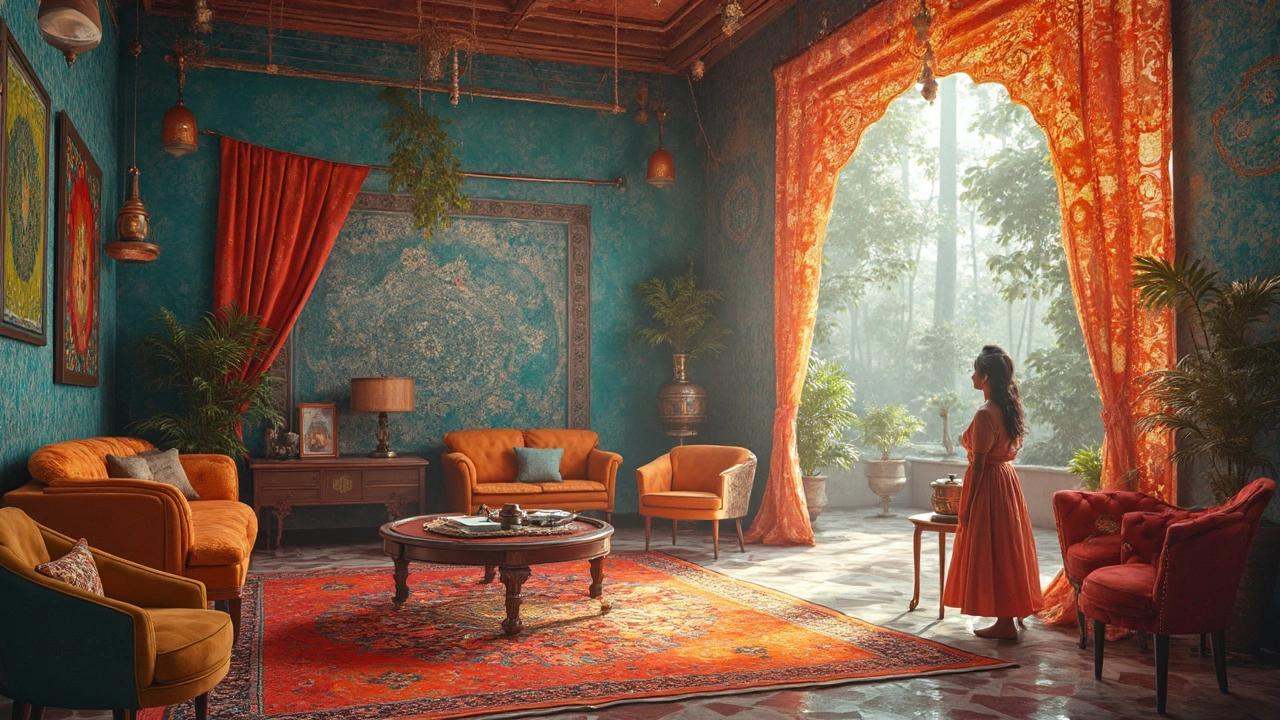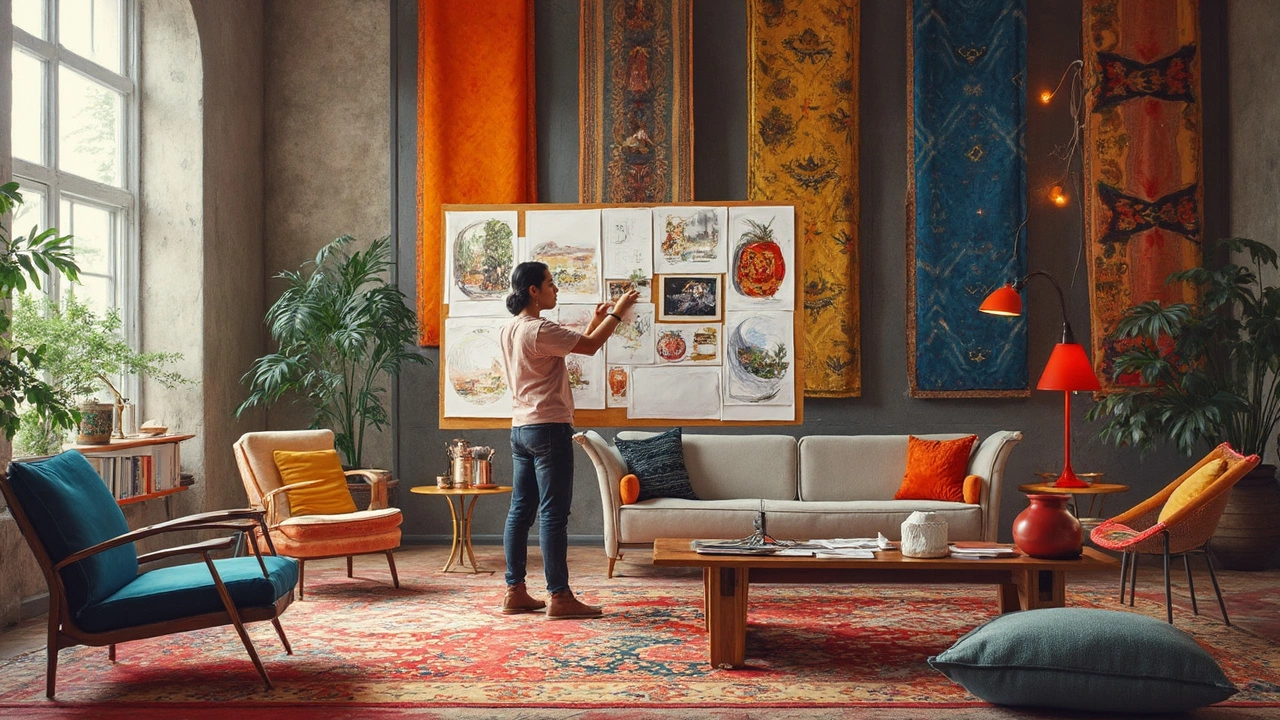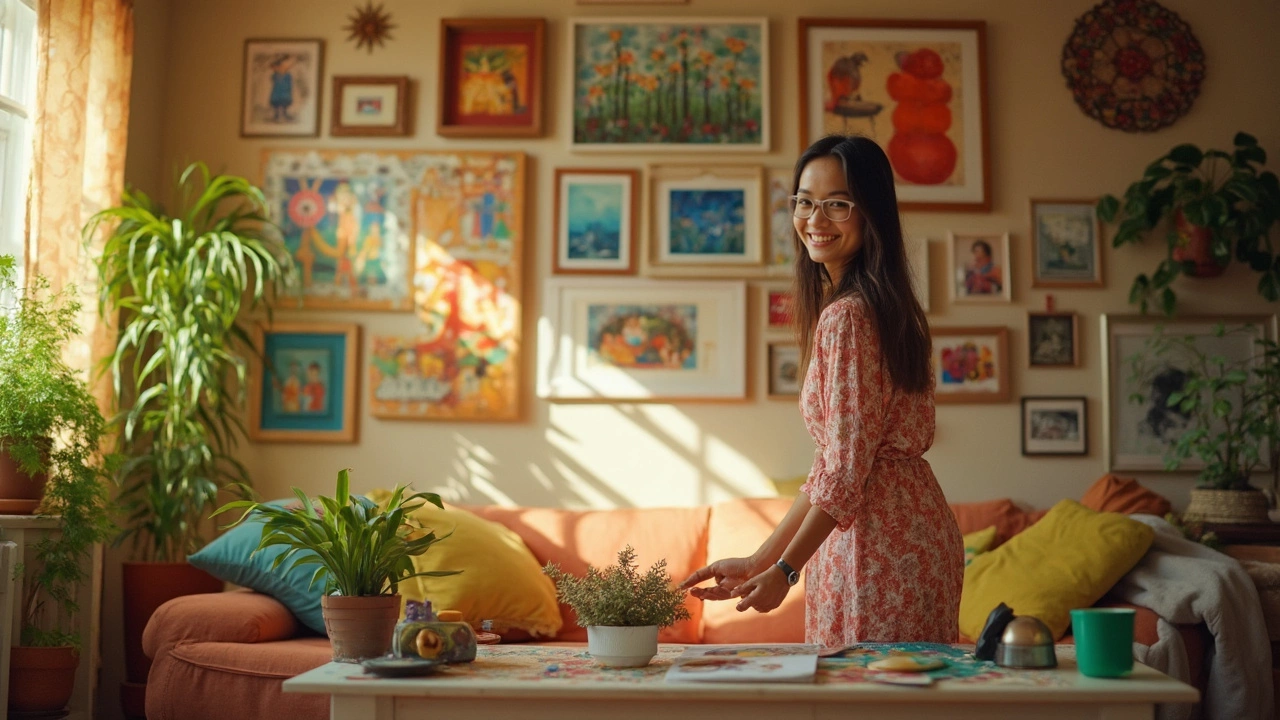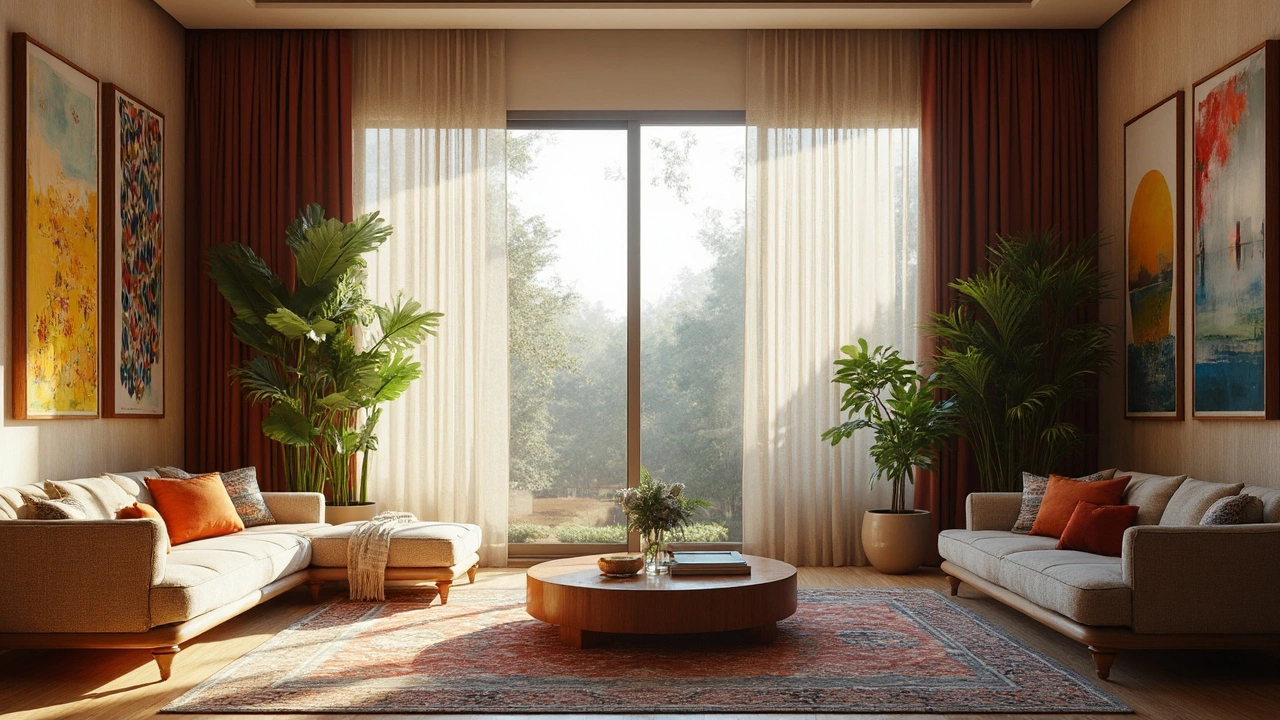Unveiling the Challenges: Becoming an Interior Designer

So, you're thinking about jumping into the world of interior design. It sounds exciting, doesn't it? Trust me, it can be a rewarding career, but it's not as easy as just picking out pretty fabrics. You'll need a mix of creativity, technical skills, and a good understanding of space.
First off, let's talk skills. It helps if you've got a knack for visualizing how different elements come together in a room. But, it's not all about aesthetics. You need to understand how light, colors, and furniture work to create a functional space. Being detail-oriented is key because, in this field, the little things matter a lot.
Now, about the qualifications. Formal education can boost your career. Many designers start with degrees in interior design or related fields. These programs don't just teach you about design principles, but also cover areas like architecture and building codes, making sure you're well-rounded.
- The Basic Skills Needed
- Education and Training
- Building a Portfolio
- Understanding Client Needs
- Staying Current with Trends
The Basic Skills Needed
Alright, so what do you really need to make it as an interior designer? At the core, it all starts with having a keen eye for detail. Designing a space that’s both functional and aesthetically pleasing involves noticing the small things. Imagine fitting a puzzle together where every piece matters.
Creativity and Vision
Your creativity is your biggest asset. You’ll need to come up with fresh designs that not only meet client needs but also have your unique touch. For this, having a vision is critical. Can you walk into a bare room and imagine its potential? That's a skill honed over time.
Technical Skills
Beyond creativity, there’s a technical side to interior design. Basic knowledge of architecture and construction is important. You'll often deal with floor plans, building codes, and safety regulations. Don’t forget, software skills are crucial too. Programs like AutoCAD and SketchUp help bring your designs to life.
Communication and Negotiation
It's not just about the space, you’ll also have to deal with people. Being able to communicate your ideas clearly to clients and contractors is vital. Sometimes, it’s like speaking two different languages. Also, let’s be honest, not every client will have the same taste, so negotiation skills come in handy.
Project Management
Think you’ll just be choosing colors and fabrics? Think again. You’ll juggle timelines, budgets, and logistics, making project management skills incredibly useful. Keeping everything on track and on budget often feels like spinning plates.
| Skill | Description |
|---|---|
| Creativity | Generate original and innovative design ideas. |
| Technical Skills | Knowledge of design software and building regulations. |
| Communication | Express ideas clearly and collaborate effectively with clients and teams. |
Education and Training
Diving into the world of interior design usually starts with some type of formal education. While you might have a natural talent for design, getting a degree in interior design or a related field can make a big difference in your career. Why? Because these programs provide a strong foundation in design principles, architecture, drawing, and the nitty-gritty of building codes.
Degree Programs
Most budding designers pursue an associate's or bachelor's degree in interior design. These programs typically last from two to four years. Trust me, those years can really shapeshift your talent into a skill that’s appreciated in the industry. If you’re in for a deep dive, bachelor’s programs go beyond design and delve into subjects like psychology, computer-aided design (CAD), and sustainable building methods.
Additional Certifications
After your degree, you might want to go a step further with certifications. Organizations like the Council for Interior Design Qualification (CIDQ) or even specialized courses in design software can make you stand out. In some places, certification is actually a must-have, as it ensures you can handle the practical side of design, respecting all those pesky legal building constraints.
Workshops and Practical Training
Getting your hands dirty is crucial. Engaging in workshops or internships while studying can offer valuable real-world experience. It'll teach you way more about working with clients and contractors than textbooks ever could.
| Education Level | Average Duration |
|---|---|
| Associate's Degree | 2 years |
| Bachelor's Degree | 4 years |
| Certifications | Varies |
Staying up-to-date with trends in the industry is also part of the deal. It might sound like extra work, but subscribing to design magazines, joining forums, and attending trade shows can spark creativity and offer networking opportunities. Plus, clients love a designer who's in the know about the latest styles and sustainable solutions.

Building a Portfolio
Alright, let's dive into the why and how of this crucial step. A portfolio is like your design calling card. It's your chance to show potential clients and employers what you're made of. If you've never built one before, don't worry. It's all about showing your best work and making it easy to see your style.
Start with the Basics
When you're just getting started, a simple PDF or even an online site can do the trick. Gather any projects you've worked on that show your range and creativity. Don't forget to include details like concept sketches, mood boards, and final shots. You want to tell a complete design story.
Be Selective and Showcase Diversity
You don't need to showcase everything you've ever done. Focus on the work that best represents what you can do. And make sure there's variety. Potential clients want to see that you can handle different styles and spaces, from chic urban lofts to cozy countryside cottages.
Include Client Work and Mockups
If you're new to the field and haven't had many clients yet, don't stress. Create mock projects to showcase what you could do. This is your chance to design your dream room without constraints.
- Start with a simple room project.
- Create a mood board with your design ideas.
- Draw up conceptual sketches to show your planning process.
- Pull it all together with a final rendered image.
Adding Personal Flair
Your portfolio should reflect who you are as a designer. If you've got a unique style or a particular niche, emphasize it. Maybe you're a pro at blending vintage pieces in modern settings or you're passionate about sustainable design. Highlighting these personal touches can set you apart from others.
In the end, a strong portfolio isn't just about past work; it speaks to what you can do. It's an essential resource in the journey to becoming a successful interior designer.
Understanding Client Needs
Alright, let's dive into one of the trickiest parts of being an interior designer—figuring out what your clients really want. It sounds straightforward, but anyone who's been in the field knows it can feel like detective work. Every client comes with their own set of desires, budget constraints, and sometimes, quirky preferences.
Initial Consultation
The first step is the initial consultation. This is where you get to know the client and understand their vision. It's crucial to ask open-ended questions. Instead of asking, 'Do you like this?' you might say, 'What kind of mood do you want to create in this room?' Getting the vibe right is essential because a relaxing home office and a vibrant living area definitely require different approaches.
Listening and Observing
Pay attention during conversations. Sometimes, clients aren’t the best at articulating what they want. Watch their reactions to different styles and ideas. Are they leaning towards minimalism or do they love that eclectic look? Notice those subtle hints, they tell you more than words.
Managing Expectations
Once you've got a feel for their tastes, it’s all about managing expectations. Be honest about what's possible within their budget and time frame. No one wants to hear that famous phrase, 'we overspent', at the end of a project. Transparency keeps the relationship healthy and professional.
Flexibility and Adaptation
Clients are human; they change their minds. A design idea they loved last week might not fit anymore after a visit from their in-laws. You've got to be flexible and ready to adapt. Being proactive and offering solutions reassures them they've chosen the right person for the job.
Remember, at the end of the day, it’s about making their space reflect their personality while maintaining harmony and functionality. The satisfaction of seeing someone love what you've created makes all the patience and understanding worth it.

Staying Current with Trends
Keeping up with the latest in interior design is crucial, especially in a world that loves rapid change. As an aspiring interior designer, understanding design trends can set you apart. It's about knowing what's in vogue but also thinking ahead to what might be around the corner.
First things first, follow design blogs and magazines. Resources like Architectural Digest and Dwell offer a treasure trove of insights into what the industry's buzziest designers are doing. These platforms can give you a clear sense of the colors, textures, and vintage vibes making waves this season.
Engage with the Community
Networking with other designers is key. Attend design fairs and industry events where you can chat with peers. Such gatherings are not just about mingling over cocktails; they're learning opportunities too. Twitter and Instagram have thriving design communities worth diving into. Many designers share their work and thoughts on these platforms, providing a window into different approaches and a ton of inspiration.
"Understanding trends is about blending the essence of style with the needs of the individual. Design is personal, after all," says renowned designer, Kelly Wearstler.
Innovate and Adapt
Staying innovative is just as important as following trends. Try mixing current styles with your own twist. Sometimes, it's the mix of old and new or the unexpected use of a material that catches attention. Remember, trends are guides, not rules.
| Trend | Popularity Rate |
|---|---|
| Biophilic Design | 75% |
| Minimalistic Spaces | 60% |
| Eco-Friendly Materials | 80% |
These trends aren't just about aesthetics; they're reshaping the industry. Biophilic designs are soaring, partly due to the global push towards sustainable living. The focus is on blending nature with home environments.
Staying relevant is hard work, but it can be fun if you enjoy exploring new ideas. Having a finger on the pulse of the design world can inspire your creativity and keep your work fresh. Remember, in interior design, staying current isn't just about following others—it's also about carving your unique path.


